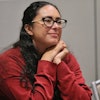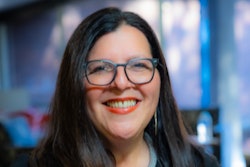Legislating the Technical Mind
Texas congresswoman works to equip young Americans with the skills to meet the nation’s technological and scientific needs.By Ronald RoachU.S. Rep. Eddie Bernice Johnson, D-Texas, is no stranger to being a trailblazer. The first woman to represent Dallas in the Texas state legislature and the U.S. Congress, Johnson has championed health, science and education causes during her illustrious political career. First elected to Congress in 1992 representing the 30th district of Texas, Johnson is now the chair of the Congressional Black Caucus for the 107th Congress and the ranking Democratic member of the House Committee on Science Subcommittee on Research. She also serves as a Democratic Deputy Whip.
Trained as a nurse, Johnson has worked hard to promote minority and women participation in science, mathematics and engineering programs and to increase funding for institutions that actively recruit underrepresented students for these paths of study. With the National Science Foundation under her subcommittee’s jurisdiction, Johnson has been recently pushing for legislation that would allow the agency to increase its funding to minority-serving institutions for enhancing the quality of undergraduate science, mathematics and engineering education.
Black Issues senior writer Ronald Roach met with Rep. Johnson in late July and spoke to her about math, science and technology education.
BI: How would you describe the challenge that our nation is facing with regard to educating young Americans to meet the demands of our future technological and scientific needs? EBJ: It’s a serious challenge. We find that we have not nearly enough young African Americans choosing fields with a good background in math, science and engineering. That’s really where the opportunities are. For that reason, I along with Congresswoman Connie Morella, R-Md. have put a major focus on recruiting minorities and women into these fields. And in the process, what we’re finding as well is that while we were recruiting minorities and women, the White males had a decline in going into the fields.
So, the program’s acronym is BEST — Building Engineering and Scientific Talent. And we have gotten a number of major corporate leaders to help direct us and to come up with some funding. Because there’s not a single business that does not need people with this kind of background. BI: Is there an explanation as to why the United States has been failing to prepare adequate numbers of people to fill jobs in computer technology, advanced science and health fields, such as nursing? How do you explain the shortfall? EBJ: It’s rather difficult to put a direct label on it, but what we have found is young people tend to start losing interest in math and the sciences around the fourth, fifth and sixth grades. I think it has to do with labeling certain courses as the hard courses and others as the easy courses. And yet the so-called hard courses are the ones that are most needed because they are the math and the sciences.BI: Have your views on math, science and technology education, especially as they pertain to disadvantaged minority students, undergone any evolution since you’ve been a member of Congress? How would you describe those changes? EBJ: Well, I started way back in the ’70s, carrying legislation at the state level to encourage more minorities and women to enter these fields. Being from a city where EDS and Texas Instruments are homegrown companies, it became very apparent, very quickly that this type of background was going to be needed for the future. TI’s Dr. (Jack) Kilby discovered the chip, which is used in practically everything now, and caused TI to become a worldwide company.
The first thing that got my attention is that it just didn’t happen at a company. An individual discovered it, so that gave me the knowledge that it’s going to be people who come up (with technology) no matter where they’re working. It’s going to be people who are going to come up with these creative ideas.
Secondly, TI went from a calculator-making company to a chip-making enterprise that has 86 percent of the market. And the chip is in everything from remote controls to key rings to toys, all of that. It’s very clear that we definitely have come through the age of technology, the age of information. We’re now in the age of digital technology, and it’ll keep going.
And all of it has to do with the very technical mind, one that is developed with a good background in math and science. And I don’t mean (basic) math where you’re adding two and two, but calculus and algebra.
BI: What congressional initiatives relating to math, science and technology education are you most proud of as a result of having played a role in their passage? Are there local programs in the Dallas/Fort Worth area you could highlight as models for the rest of the nation?EBJ: From the time I first came to Congress, I’ve been trying to push legislation that would take the student into the workplace, the marketplace, so they can relate that environment to everyday products and everyday activities. One piece of legislation that passed recently that I think will be very important in this area is the Technology Talent Act. We’ve had the benefit of some enrichment programs in Houston and in Dallas. The urban programs incorporate a great deal of math and science, and also the relatedness it has to everyday activity. We have seen a growth in the scores of students in Texas in these areas.BI: How do you view the goals of President Bush’s “No Child Left Behind” legislative program? Do you believe the administration is taking the correct approach to education reform?EBJ: The bill has some good points. The problem with the bill is that it becomes an unfunded mandate. We have a lot of talk about “No Child Left Behind,” but there’s not anywhere near the adequate money appropriated for it. As a matter of fact, there’s only about a 2.6 percent increase in education funding with all the things that are being directed through this legislation. It’s almost like education reform is a good thing to talk about, but it hasn’t come with any financial support. Millions of kids will be left behind until the money is put in to fund it.BI: How would you describe the legacy of individuals, such as Congressman Louis Stokes, Augustus Hawkins and others in their efforts to spur science and technology research by historically Black institutions? EBJ: I think they were both outstanding. I am everyday so grateful to persons who came along before me who exhibited such strong leadership. I didn’t have the privilege of serving with Mr. Hawkins, but I did have the privilege of serving with Mr. Stokes.
Then there’s former Representative Merv Dymally from California; I followed him as chair of the Congressional Black Caucus science and technology braintrust. When I first came here, there was not a lot of interest, and it was kind of a struggle to get everyone else to work with me. But coming from a high-tech environment, I knew it was such an important area, and I kept pushing it. Now, I think the acceptance is much better within the caucus as to how we have to be driven by the marketplace to get a better grounding in the math and sciences. BI: Why do you think that change has come about in the Congressional Black Caucus with regard to science education?EBJ: I think more exposure. When I became the caucus chair, one of the major goals that I had was to expand our dialogue, to get out of Washington and to see what was going on in the country. Our first visit was in Silicon Valley, and shortly after that we went to Dallas because we do have some top national programs. I wish all of our students had access to them.
In Dallas, we have the model program for day care. We have the model program for high school math, and we see the difference in our kids and in their performance when they’re given this kind of attention.
So I wanted to share first what the marketplace looked like when we went to Silicon Valley. And then, secondly, in addition to the marketplace, show fellow caucus members how we can get students from pre-school to higher education into the science and technology fields. BI: What do you see as the greatest challenge for HBCUs as they seek to become more involved in science and technology research?EBJ: I think the greatest challenge is going to be money. In order to come up with the type of infrastructure that’s needed because traditionally we don’t have as many students coming into the schools so we draw in a lot less money than others. And then raising money on a freelance basis is also a little bit difficult.
Public dollars are getting tighter and tighter. For as long as there are public dollars, we will push to make sure that the HBCUs get their share. BI: Given your nursing background, have you been active dealing with the nation’s nursing shortage from Capitol Hill? How do we solve this crisis?EBJ: There are a number of things that we’ve got to do to solve it because students are just not choosing to go into nursing. We’re going to have to do recruiting. We’re going to have to put some retention programs in place. Then we’ve got to look at giving nurses more decent working hours and better pay.BI: How significant a role can the National Institutes of Health play with regard to boosting math and science education for disadvantaged populations?EBJ: I think NIH can play a significant role because all of its money is designated for research. Congressman J.C. Watts, R-Okla. approached me about visiting NIH with him and we talked about it just recently. And I told him I’d be very willing to do that. BI: How can the National Science Foundation improve its track record in bringing more minorities into math and science fields?EBJ: What the National Science Foundation has done is in research, which is to review grant applications and finance grants. There are a number of systemic programs that are going on to improve the curricula and to improve teachers’ skills as well as attract students.BI: With your experience in the Texas state legislature, what type of impact do you think you’ve had regarding bringing together African American and Hispanic legislators in the U.S. Congress?EBJ: I think there’s been a great impact. When I had the vision of bringing us together to have time to get to know each other personally, to socialize a little bit and discuss all of our issues at a retreat, it went very well, and we’re going to continue to have them again. But we’re also going to be meeting in the interim.
And we have been doing a great deal more of planning — we’re planning campaigns together and supporting candidates together. Our next retreat will be the third weekend in April next year. BI: Is there room for improvement in making sure federal agencies, such as NIH and NSF, are accountable to HBCUs with regard to providing research grants and training opportunities?EBJ: Yes. I think we’ve had a bit more interest in accountability since I’ve been working with the National Science Foundation. There are some things that need to be improved in order (for these institutions) to qualify for getting some of the grants. But I think that’s also possible. And the sensitivity has been very good in the agencies as we’ve tried to influence a fairer distribution of those dollars. BI: Has your advocacy of math and science education had an impact on community colleges? Are there any specific initiatives? EBJ: I have two major community colleges in my district and I work with them. They are excellent in the entry-level type of training, and I guess that’s what they propose to be. And we need that.
What we need even more are students from graduate levels so that we can have the brainpower to put new products on the market, and to provide the advanced science for the technology. We can’t get to the next level in technology until we have gotten to that level of the science that backs it up.
And that (idea) sometimes is not understood even by our students. They think if they’ll go take a computer science course at the community college then they’re ready to go. And for some jobs where you need to know how to work a computer, that’s fine but it doesn’t get you to the next level. We’ve got to provide for more Ph.D.s.
We need to make the opportunity and encourage our bright students to do it. Often, our students look for the fastest way to get out and don’t think about investing in their future. BI: Do you think there’s more room for helping community colleges have stronger connections to four-year colleges and the research universities since so many minority students start out as community college students? EBJ: Yes. I think it would be very good for them to work more directly with each other because many, especially the low-income students, do go to the community college and probably should go to the community college to get a grounding and become accustomed to the socialization that comes on campuses. And there needs to be a smooth transition for students into the four-year institution.
© Copyright 2005 by DiverseEducation.com















